Prishtina’s traffic jams start early in the morning. At 6 a.m., the streets are quiet and still. At 7 a.m., the first signs of congestion appear as short queues start forming at the traffic lights and roundabouts. By 8 a.m., vehicles are queuing and blaring their horns. The chaos continues throughout the rest of the day, moving from one part of the city to another.
The capital of chaos
Prishtina is becoming synonymous with traffic jams.
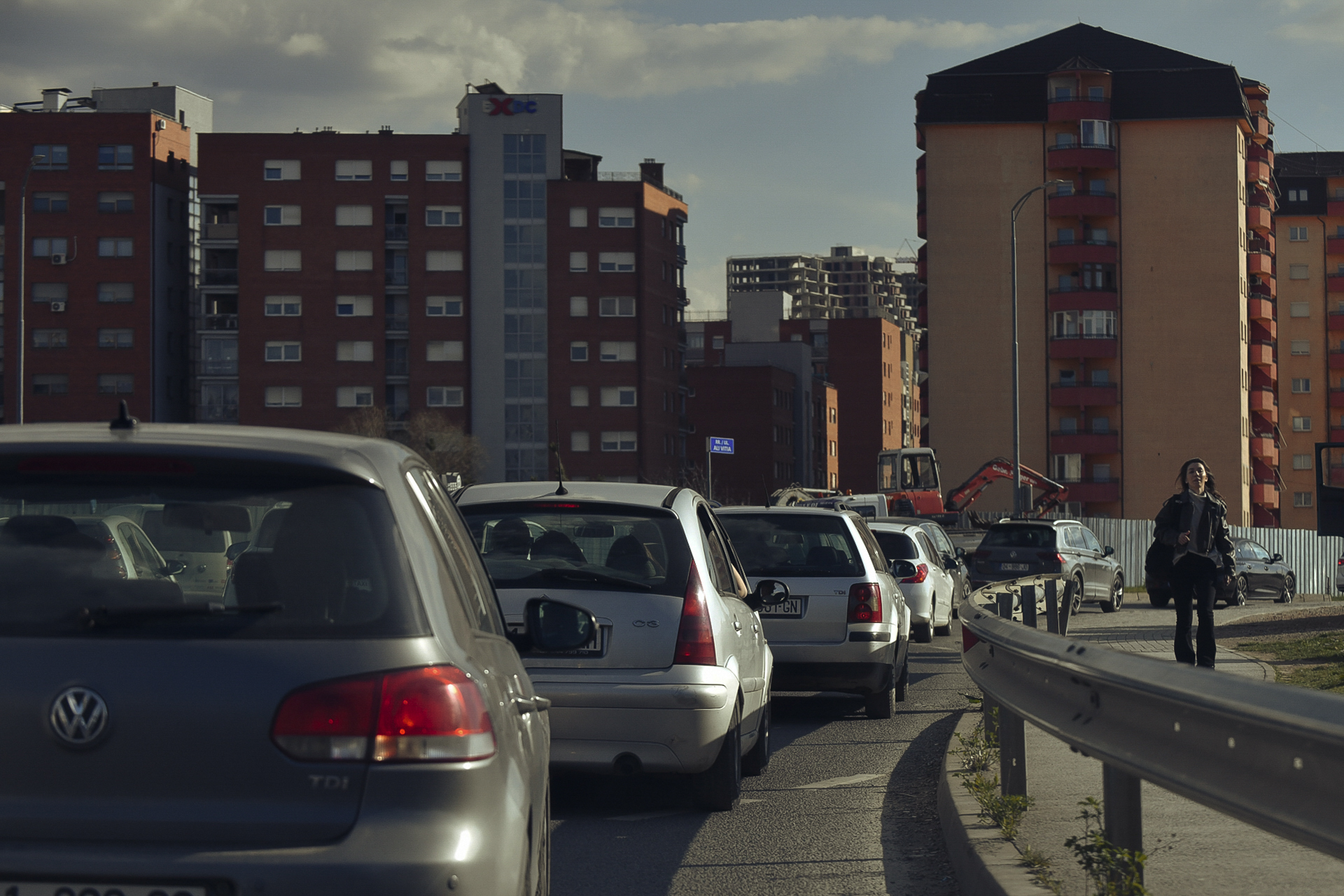
Photo: Atdhe Mulla / K2.0
Residential expansion in the capital has extended to new areas such as Mati 1, Prishtina e Re and Veternik, while most workplaces and schools remain concentrated in the center. This means that traffic congestion typically begins at the start of working hours, 8 a.m.. Traffic congestion usually peaks between 4 p.m and 6 p.m..
However, the chaos of traffic congestion is not only caused by residents of new neighborhoods. The influx of commuters from other cities to Prishtina also plays a big role. This is due to the fact that Prishtina houses central institutions and a large number of businesses, putting it under the constant pressure of a large volume of cars traveling into the city.
So, in addition to Prishtina’s neighborhoods, traffic is also fed by the four roads that enter the city from other areas of Kosovo.
There is no exact figure for the number of cars circulating Prishtina. However, in 2018, former Mayor of Prishtina Shpend Ahmeti said that around 135,000 cars circulate Prishtina daily. This is a little more than a third of the 333,000 cars registered in Kosovo.
This large number of cars challenges members of the public’s patience when navigating through traffic. It’s increasingly common to see social media flooded with images of drivers leaving their cars to fight with each other on intersections and shortcuts.
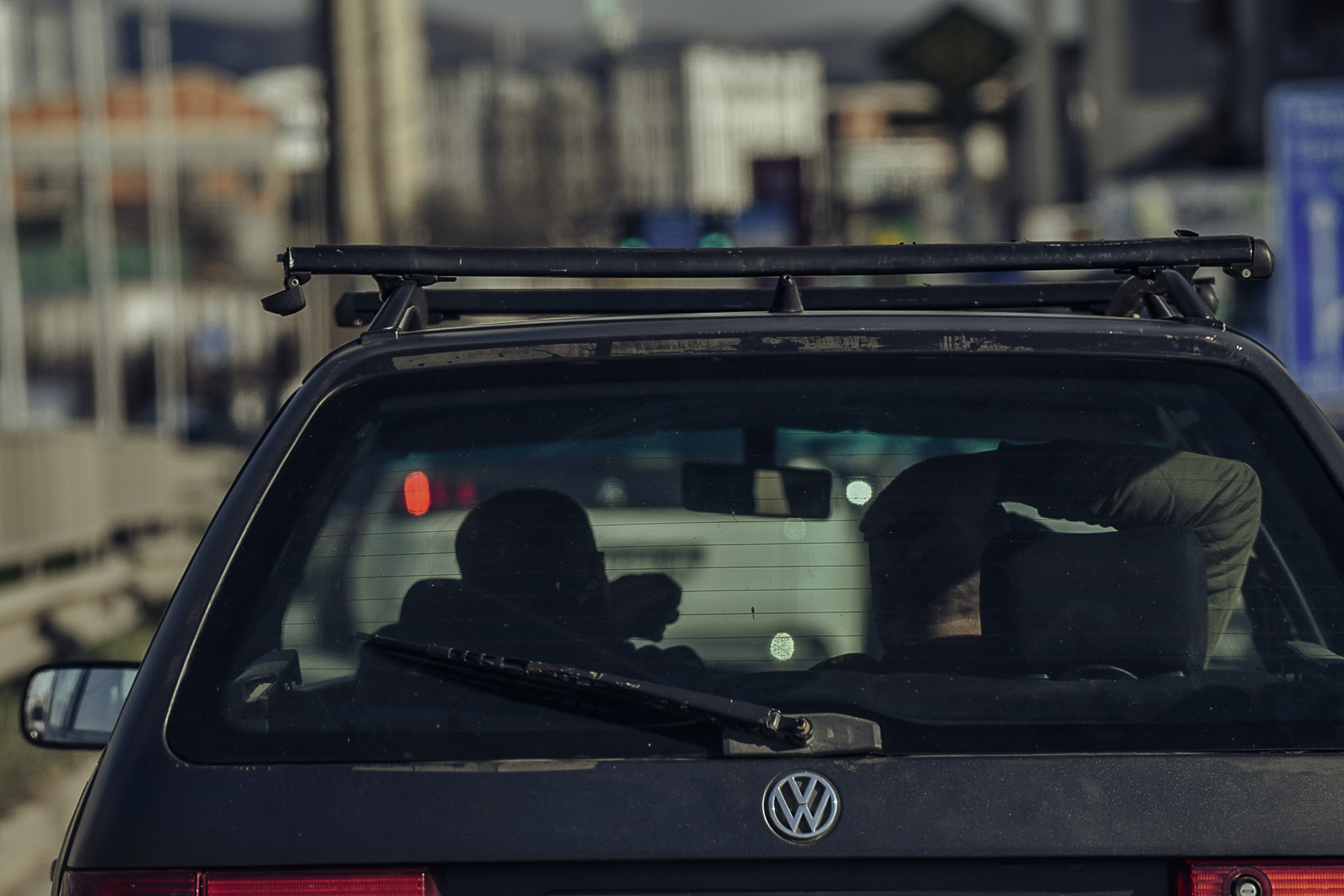
Photo: Atdhe Mulla / K2.0
Fights often erupt after fender benders after drivers aim to edge forward onto the road and accelerate away faster. But accidents are not always straightforward.
The Kosovo Police, without specifying data by city, has shown that the number of fatal accidents during the January to February period in both 2023 and 2024 is very similar.
The number of fatal accidents in Kosovo in 2022 and 2023

Source: Kosovo Police.
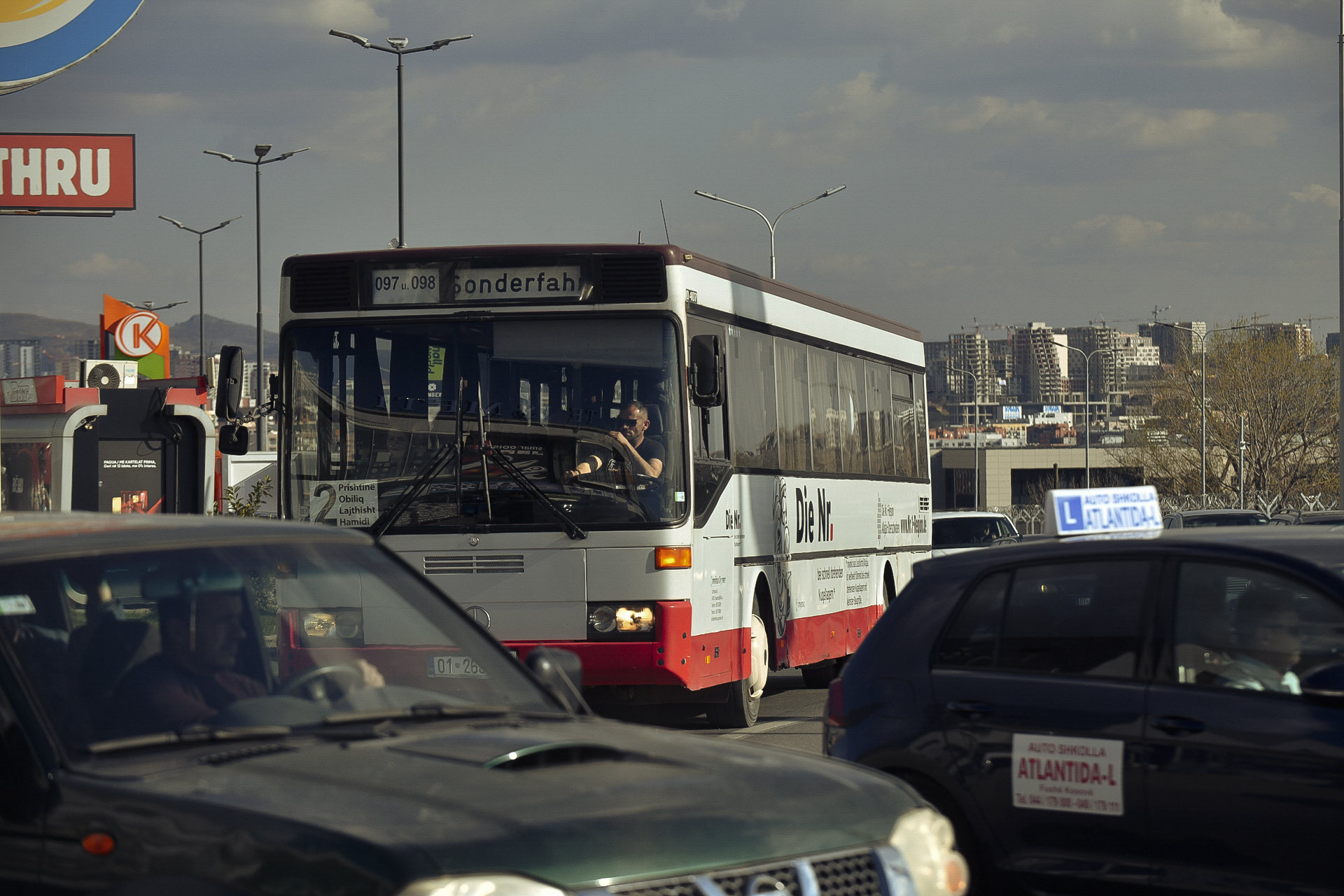
Photo: Atdhe Mulla / K2.0
Drivers in Prishtina have been waiting for a solution to alleviate the traffic congestion in the city’s roads for some time. Although the Municipality of Prishtina has carried out several pilot projects, the chaotic traffic remains one of the capital city’s defining characteristics.
Traffic everywhere, but no data
Traffic expert Bekim Ahmeti drives every day on the road from Kodra e Trimave neighborhood to behind the Palace of Youth and Sports. On this route, he does not face that much traffic, but his professional curiosity pushes him to try out other roads as well.
“There are several indicators [that traffic is present everywhere], but I will tell you one. On normal roads, my car consumes 5.4 liters per 100 kilometers. Yesterday I went to the city, the consumption went to 15.5 liters per 100 kilometers, just imagine,” said Ahmeti. Together with traffic engineers, he has used drones during the peak hours in Prishtina, from 4 p.m. to 6 p.m., in order to observe and study the traffic jams. He noticed that there are no roads that can be deemed free from congestion.
“If before there were only some roads that were filled with cars, today it is different. Today, there are traffic jams everywhere. Even the smallest alleys are filled with cars as people are trying to arrive at their destinations using shortcuts,” he said.
Mott McDonald, a U.K.-based development, management and engineering consultancy, was hired to create and implement the Prishtina Sustainable Urban Mobility Plan. Published in 2019, the plan highlights that many intersections across the city have congestion and safety issues.
According to Mott MacDonald, two segments of streets in the city center experience the most severe traffic over a 12-hour period. The most congestion, in both directions, occurs on Bill Clinton Street, with around 48,000 cars passing through over 12 hours (from Menza to the exit to Fushë Kosovë). Additionally, Fehmi Lladrovci Street sees significant traffic, with around 33,000 vehicles passing through over 12 hours (from the student dormitories to the roundabout with the flag).

Photo: Atdhe Mulla / K2.0
The plan’s first pages envision a completely different Prishtina, saying that it “will be a clean, green and dynamic city with sustainable mobility that is accessible and affordable for all.” The plan’s vision is establishing a city with “a system that supports everyday life” and promotes “sports, recreation and active lifestyles.” These efforts will make Prishtina “a place of culture, history and innovation.”
Similarly, the current mayor of Prishtina, prominent architect Pëparim Rama, pledged a vision for the city under the slogan “Prishtina of Experiences.” He promptly proceeded to implement the mobility plan, which was left to him by his predecessor, Ahmeti.
During the first three years of Rama’s term as mayor, several tests have been conducted to address the issue of traffic congestion in the city. The municipality deemed these tests essential to thoroughly analyze the issue. One of the tests was for the cars to move around the ring road in one direction. In addition to the noise from honking horns, these tests also resulted in long queues and frustrated citizens. Despite being irritated by the disruption caused by these tests, citizens waited to see what would happen.
Rama’s slogan, “Prishtina of Experiences,” has started to be used frequently in citizen’s posts on social media, alongside photos of traffic jams.
Following the traffic congestion tests, in December 2023, the Municipality of Prishtina decided to close George Bush Street, near the Cathedral of Saint Mother Teresa. Rama did this by endorsing the mobility plan and emphasizing the need for spaces for walking rather than for cars. This aligned with his campaign promise, “pedestrians come first.” He inaugurated the closed road by wrapping it in holiday decorations.

Photo: Atdhe Mulla / K2.0
The closure came step by step. Initially, cars were no longer allowed, but buses and taxis were still permitted. Later, buses and taxis were also prohibited in order to make space for wooden cabins offering mulled wine and hot chocolate to be installed during the New Year period.
The proposal to close George Bush Street was foreseen in the mobility plan, but not until 2026 at the earliest. The road’s closure should have been preceded by the development of the outer and inner ring roads encircling the city, which would divert traffic flow.
“From the beginning, I have been against it being closed. The city is not ready for this closure. There was a task force of experts and I, as part of it, was against it. You are seeing the result today,” said Ahmeti, the traffic expert, who then resigned from the task force formed by the Municipality of Prishtina.
The plan also included an underground parking lot, built in 2022 on the University of Prishtina campus through a public-private partnership. However, the closed road blocked one of its entrances and exits. Months later, in March 2024, the municipality opened a part of the closed road to access the parking lot.
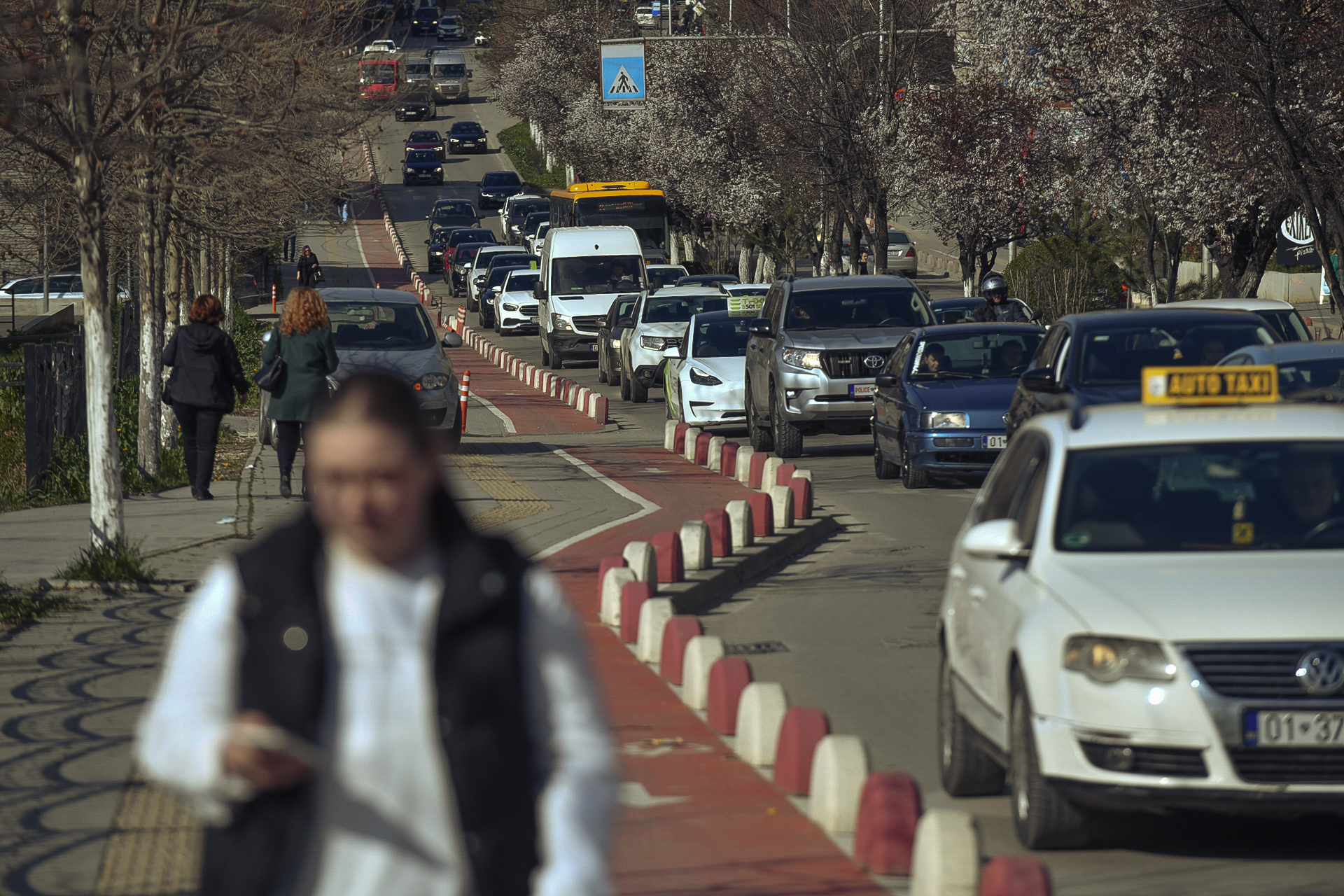
Photo: Atdhe Mulla / K2.0
Until this entrance was made accessible once again, all cars had to enter and exit the car park through Eqrem Çabej Street, which caused successive traffic jams.
After the wooden cabins were removed, the blockades remained, preventing buses and taxis from passing through. Now, the area is empty most of the time, resulting in more congestion on nearby streets such as Luan Haradinaj, Kosta Novaković, Robert Doll and Agim Ramadani. Citizens’ frustration with the closure of this road led to protests that demanded the reopening of the road for cars, given that it has remained a road and is not being turned into a square.
With just a year remaining until the next municipal elections, Rama’s proposals to alleviate traffic congestion and establish new roads and connections between neighborhoods appear unfeasible.
Economist Gent Sejdiu works within the Municipality of Prishtina to implement the mobility plan and reform the urban bus network. Every day, when Sejdiu leaves his office on the fourth floor of the old municipality building, he faces the traffic.
“We have done tests for [two-way] roads to be turned into one-way roads several times. It is a problem to plan without these tests,” said Sejdiu, who works in a team with three other people. However, neither he nor his team have any data regarding the impact of closing George Bush Street.
“We have no data. This is because we have not had a contract with a company that could do this,” he said.
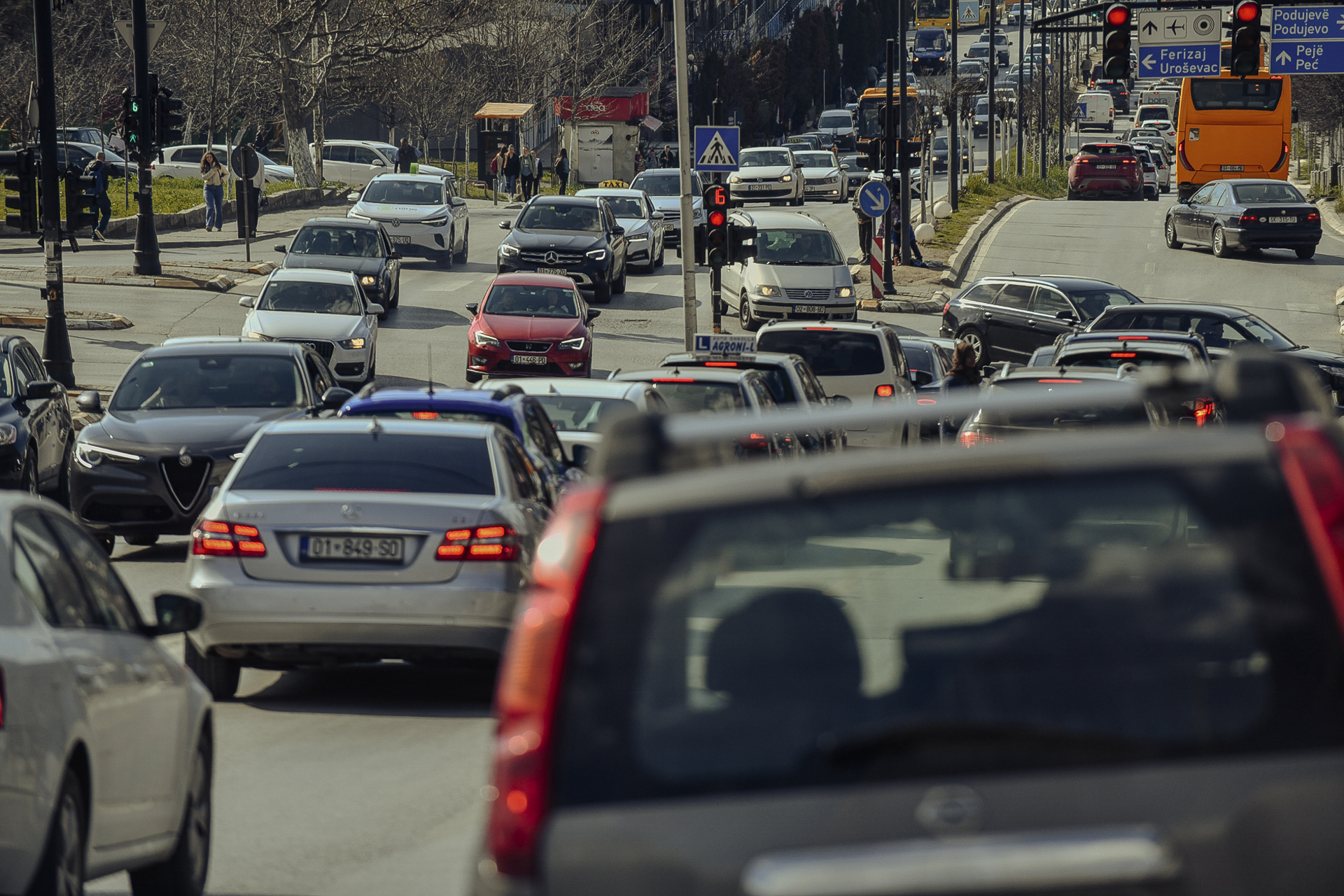
Photo: Atdhe Mulla / K2.0
As a result, there is no clear analysis of how the decision to close George Bush Street has affected Prishtina’s traffic chaos. Sejdiu appears to have put his energy into reforming public urban transport as a solution, which is also reinforced by the mobility plan. The plan also includes adding more buses, activating the train route from Fushë Kosovë to Prishtina, potentially extending it to Podujeva.
Similar to cars in the city, the urban buses are also held up in traffic jams. The buses are often held up in various locations, meaning that longer bus journeys are often significantly delayed. This causes members of the public to go for other means of transport.
“The small number of buses and non-defined agreements with economic operators have contributed to this situation. I think that the beginning of 2025 will find us with a very good and functional public transport system,” said Sejdiu, who in the middle of March had instructed that there will be no more bus bays where the bus stops to pick up passengers. Instead, they will stop in the traffic lane.
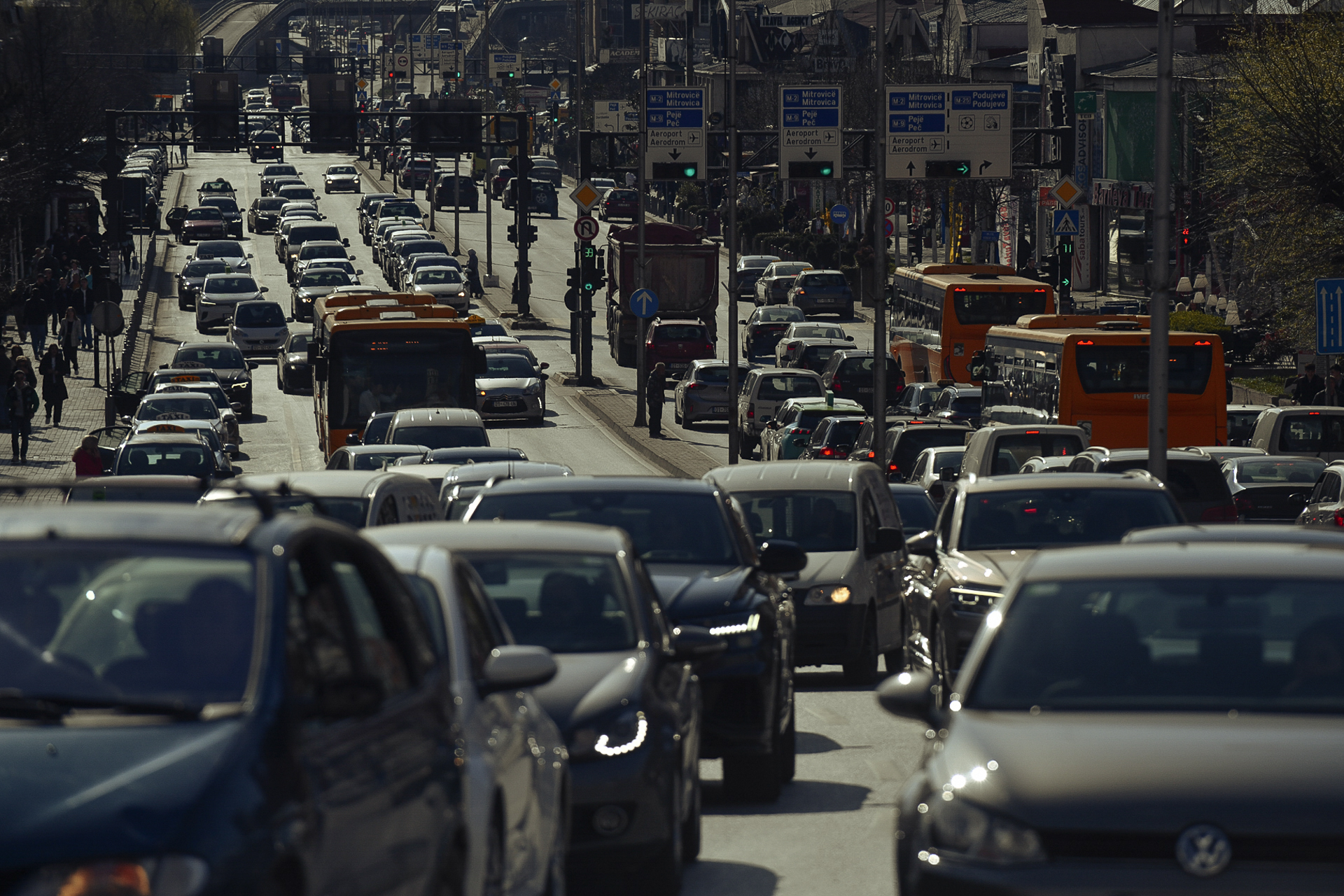
Photo: Atdhe Mulla / K2.0
“Whoever is behind the bus, should wait and know that the bus has priority,” he said, wanting to convince citizens to use urban buses. “If you should wait when using buses and cars as well, then why not walk?”
As Prishtina’s neighborhoods grow, so too does the city’s quantity of cars, given the absence of an efficient urban transport alternative. Sejdiu said that he knows that reformed urban transport will alleviate traffic in the capital by ensuring that the bus lines operate regularly and more smoothly. This can lead to citizens using urban traffic more often and cars more rarely.
“The central ring buses will operate continuously within the inner circle of the city. Buses from the suburbs will transport passengers to the central stations and then return to the suburbs, alleviating congestion in the city center. The same ticket will remain valid,” he explained, noting that his plan is partly inspired by that of Sarajevo. Like Prishtina, the Bosnian capital faces challenges with its hilly terrain, making walking or cycling uphill difficult.
The plan also suggests that individuals coming from Veternik should park their cars near the Medical High School and use the city buses with the parking bill. Therefore, employees coming from other cities into Prishtina for work will not need to access the center by car. The governing program suggested that this system, known as Park and Ride, should happen at all the entrances to Prishtina. But this idea is not visible on the horizon.
Fatal accidents
In March 2024, 28-year-old Shkumbin Hebibaj lost his life while waiting at a traffic light near the Ministry of Education. A car lost control and hit the traffic light, which then fell onto the victim’s head.
In the same month, a woman was walking in a pedestrian crossing at Slovenia Sport when a car that had zig-zagged through the traffic almost hit her. The footage flooded the media and social networks.
Architect Ferhat Bejtullahu lost his life on December 3, 2023, when he was hit by a car traveling at high speed while walking.
According to Ahmeti, excessive speeding and disobeying traffic rules are the main reasons for accidents and fatalities. He said that driving in Prishtina these days is not easy. Besides the need to educate drivers, he wonders how there are still no speed radars and security cameras to record traffic violators.
“They have attempted to address this issue by installing speed bumps. There are very few roads without speed bumps, but it is not giving us results. Radars are the solution and I don’t know why they are still waiting to install them. Until now, they’ve tried everything and I really believe that radars are the solution,” he said.
According to Ahmeti, the large traffic jams cause people to lose patience.
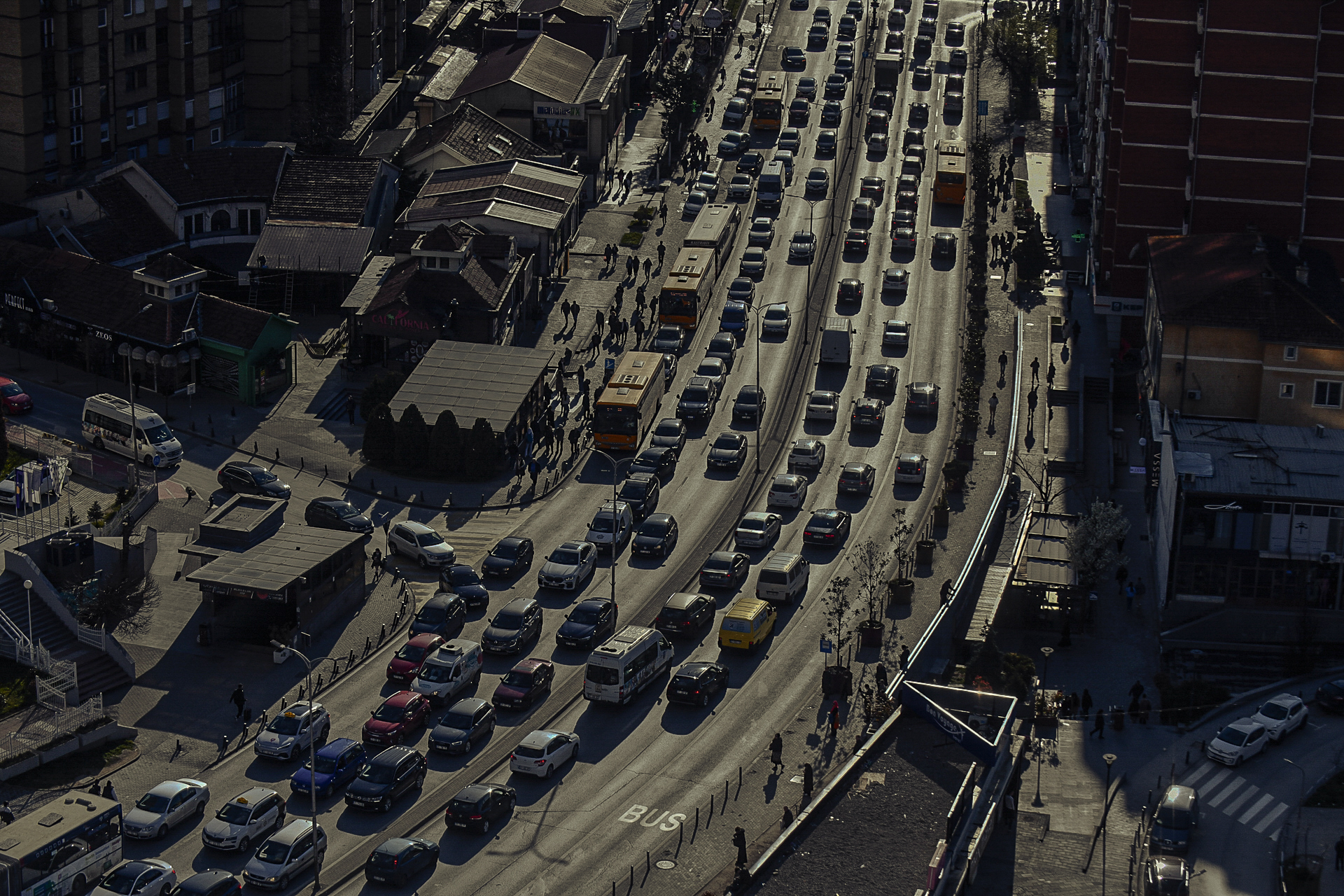
Photo: Atdhe Mulla / K2.0
“I challenge you to go out on the street when there are big queues of traffic. You will see cars that turn around in the middle queue to find other roads. There are drivers who speed up as soon as the traffic clears up a bit. They are simply angry and don’t respect the rules anymore,” said Ahmeti.
Simply spending 10 minutes observing one of Prishtina’s intersections controlled by traffic lights reveals how many drivers use the last second of the yellow light to pass. You can even see others who step on the gas pedal at a red light to move as soon as possible.
“They are equivalent to a criminal offense, it is a crime to drive at a red light at a traffic light. This leads to accidents,” said Ahmeti, adding that cameras should be installed around the city to identify offenders.
Some of the penalties foreseen by the amendment of Law No. 08/L-186 for Road Traffic Rules:
Fines for using the phone while driving
– 100 euros + 1 negative point – a driver’s first infraction
– 200 euros + 3 months driving ban + 2 negative points – a driver's second infraction
– 500 euros + 6 months driving ban + 3 negative points – a driver who has been caught more than twice
Some of the fines for speeding within a residential area
- 20 euros - for exceeding the permitted speed by 5-10 kph
- 40 euros - for exceeding the permitted speed by 10-20 kph
- 60 euros - for exceeding the permitted speed by 20-30 kph
– 200 euros + 3 months driving ban + 3 negative points – for speeding from 30 to 50 kph over the permitted speed
The Municipality of Prishtina has plans to install cameras to monitor traffic violations. However, after being proposed in January 2024, this idea sparked debate due to the impact it could have on citizens’ privacy. Despite this, Director for Security and Emergency Lulzim Fushtica has said they are scheduled to be installed on the roads sometime this year. Initially, they are planned to be installed in Prishtina’s main squares, intersections, roundabouts and entrances and exits.
According to the municipality, the cameras will identify law breakers who will be punished automatically. The recent lack of decrease in the number of accidents has led to increased fines in the new Traffic Law. Effective since April 2024, this new legislation entails harsher fines for offenses such as using a phone while driving, as well as increasing the penalty for speeding, even by as little as 5 kph.
“We can increase the fines, but we are not doing enough to catch those who are committing violations. This is the problem. These penalties will not reduce accidents,” said Ahmeti.
The police, aside from the statistics, have not shown a commitment to implementing controls or employing other methods which could reduce the number of accidents.
The total number of accidents in Kosovo in 2022 dhe 2023

Source: Kosovo Police.
With ongoing and unchanging traffic patterns, coupled with an increasing number of vehicles, Prishtina’s roads are increasingly congested. Prishtina has earned the nickname “the capital of chaos.”
Feature Image: Atdhe Mulla / K2.0
![]() Want to support our journalism? Become a member of HIVE or consider making a donation. Learn more here.
Want to support our journalism? Become a member of HIVE or consider making a donation. Learn more here.

